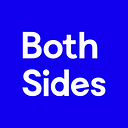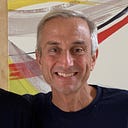Why Computer Vision Tracking the Flow of People Will be a Huge Market

As I’ve written before I believe Computer Vision will become a major factor as a Human-Computer Interface (1) as sensors and cameras help us make sense of our physical world.
There is so much in the media about “The Internet of Things” that it has lost meaning and for many for some strange reason it became a short-hand for wearables. Wearables are clearly an important market but to me a much broader use case is bringing real-world objects into the computing world and there is no better mechanism than Computer Vision.
That’s why today I’m so excited to finally be able to tell you about Density, a company I led a $4 million financing (2) along with Jason Calacanis (We’re teaming up on the board together! It’s been so great to collaborate and work towards this common purpose) and with Jonathan Triest at Ludlow Ventures, Amit Kapur at Dawn Patrol and several others.
As you can gather from the Giphy image above, Density anonymously tracks the movement of people as they move around work spaces. It’s a small and elegant device that hangs about doorways and provides “anonymous people tracking as a service.”
We’re essentially a data platform and envision others building applications to take advantage of this information. At its most basic level it creates simple records of ingress and egress through doorways (people moving in and out) and each movement becomes a record in a database that can be tracked in realtime.
The basic use-cases of this simple data are obvious.
- You can track how many people are in a room to make sure there are no safety concerns or the people aren’t violating their insurance policy.
- You can track meeting rooms in a large campus to find out which rooms get used most often and at which times of the day.
- You could track the flow of people onto a subway or train line to better predict the frequency and length of trains required by time of day.
- A mobile marketing company could track campaigns and then measure increases in retail traffic driven into local stores.
- It could also be used with elderly parents to track whether they’re doing ok and potentially even alert automatically to a fall or to a person with Alzheimers crossing an off-boundary barrier.
- Businesses could use people tracking to show you wait times so you could decide whether you want to impromptu come update your driver’s license and these same businesses could use people tracking to make peak staffing decisions.
- and so on.
But as you may gather from the Giphy above, the simple use case is greatly expanded by the elegance of the Density solution. The software and computer vision recognize when it’s a human passing by the laser and can filter out other movements like doors opening or other objects passing by (dogs, for example).
Each human is captured in a polygon shape at a precise moment in time. As she moves around the room each micro-movement becomes a new row in the database with the coordinates and time sequence. So a single human flowing through a room could of course produce thousands of rows in a database and computer applications can make sense out of this data and machine learning algorithms could of course start to make informed decisions about things like “way finding” signage placement, where crowd risks may be building, etc.
That the computer vision has the ability to track the “flow” around a room and not just a static count is a big deal and the fact that we provide this data cheaply and anonymously we believe will lead to the creation of a massive market with applications supporting many use cases. Density is simply the data & analytics platform. Our goal is to massively drive down the costs of capture for people flows and create unlimited potential for organizations to understand this and draw insights that help better plan spaces.
Of course if an organization buys Density sensors that data isn’t available more broadly to the market unless they opt in to sharing with others. The initial usage of Density will be single organization but we think it likely that over time organizations will opt into sharing data across companies in limited and controlled situations.
Why Density?
The investment thesis for me combines my belief in computer vision as a next-gen I/O (3) along with my thesis that The Innovator’s Dilemma or Deflationary Economics drive all of the largest success on the Internet (4).
Today’s people tracking solutions are hugely expensive and mostly used in retail environments. The costs have greatly limited adoption and we think that’s about to change in a massive way.
The team insisted on anonymity because it believes the right low-cost, widely available tracking devices shouldn’t be recording people’s identities, which would both limit adoption and also increase costs dramatically.
At the earliest stages when I invest my decision is 70% team / 30% market (5). I have to believe that I’ve met a team of extremely bright, highly competitive and deeply passionate founders who have an idea for a product that has the potential to transform a market.
I look for somebody who is almost mission-driven to see the product in the market more than to make a quick buck and I look for a founder who is frugal, grounded and has a strong sense of what he or she believes uniquely about what is wrong with a market and how it can be fixed.
I always tell people that it’s important who introduces you. I was talking to my friend Jonathan Triest at Ludlow and told him I had freed up a bit of time and was looking for an early-stage company, technically-minded company to back. We had done a few deals together in the past year so I wanted to know what he had seen recently.
He described Density’s team and product and I asked for an immediate introduction — he told me they had already started fund raising and I hate meeting people late in a process.

From the first meeting I had with the founder & CEO — Andrew Farah — and his team of Syracuse grads, I knew they had the right vision, temperament and motivations for building out this market.
I brought a group of them immediately down to LA to meet the rest of my partners. We of course had a healthy internal debate about whether the device was accurate enough since it originally relied upon infrared and couldn’t track with enough precision.
On the other side we debated whether a higher-end solution with video cameras was the way to go and what the demand would be for anonymity versus solutions that can help with security / identification.
We ultimately concluded that exceptionally talented teams like Density would make the right product design decisions and we shouldn’t second-guess today’s products versus the capabilities of the team to make the right product selection choices as they went from prototype to finished product.
And of course within a few months of having raised the funds the team perfected the product design and moved away from infrared towards laser and improved the efficacy, the data collection and the accuracy all while holding costs constant.
That’s why in early-stage investing you back great teams and don’t get too hung up on today’s exact product specification — you’re more looking for how they’ve made their design choices to date, what other options they considered and how they reached their initial conclusions. You’re also testing their mental flexibility in considering alternate solutions so that you know ultimately they’ll make the highest quality decisions based on the data they gather in their journey.
I can’t emphasize this enough — ultimately investors need to trust founding teams to make these hard decisions because the team lives in the trenches day-in and day-out and investors can fool themselves into thinking they know the right answer through intuition or meeting 10 companies in a space. Nothing beats the team on the ground and if you don’t trust them to make the hard calls — then don’t back them. Our role is sparring partner. Our role is to make sure your team is asking itself the hardest questions. In the end, the vote is yours.
What Next Density?
Today we’re formally announcing the product is available to the first companies and developers who order it (we have limited inventory) and it will become more generally available in Q1 of next year. It’s not a consumer product — it’s for people with technical capabilities. We’ve had it in private Beta for the past 6 months with companies like Uber, with major universities, with a major airline and many other companies.
There’s an excellent 1-minute overview video here and embedded below:
If you’d like to be included or are just interested in learning more please visit the Density Website.
Appendix
(Medium doesn’t yet allow me to have links in the story that open new tabs so I’m putting most of my links as an appendix so I don’t distract the reader by clicking off the main story)
- Computer vision as a major investment theme for Upfront Ventures including Nanit, Osmo, Navdy, GumGum and Density.
- Density raises $4 million from Upfront Ventures, Ludlow, Dawn Patrol, Jason Calacanis and more.
- I did this very short video on Snapstorms.com (now searchable by category of entrepreneur advice) if you’re interested in hearing some quick views on Computer Vision as I/O for the future of computing (or you can just watch from embed below)
3. Innovators Dilemma and Deflationary Economics and how they drive startups.
4. How I Invest?

